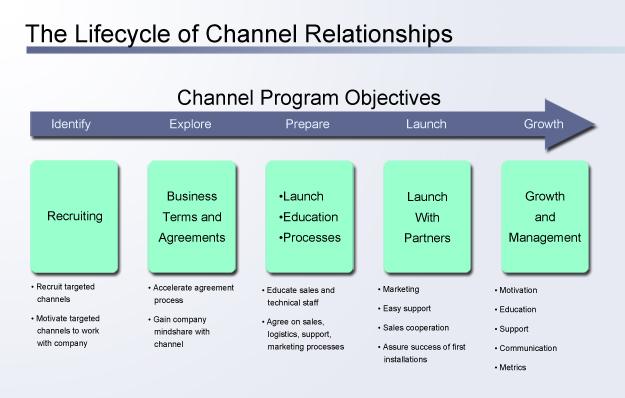Latest News
- New Business with Fundraising Consulting Org
(posted: Dec, 2021)Providing market research and business strategy
Latest Blog
- Build, Buy or Partner? Product Mgmt Challenges
(posted: Mar, 2019)The critical issue product marketers and managers face is to choose the appropriate product development strategy. Deborah offers some insight in this article.
Go-to-Market Strategies: Speeding Your Channels To Success
posted: October 28th, 2014
So much attention is spent on the front end of channels, determining whether to build, buy or partner, channel selection and recruitment. In our years of channel management, the success of channels has depended just as much on the back end supporting the channels correctly. Too often, the channel had to fend for themselves. There was no channel program, the channel did not receive help in sales and marketing or expensive channel sales representatives wrote sales training, developed collateral and tried to solve support problems, rather than working with their channel partners to build business and close deals.
In my years of channel management and marketing experience, the success of channels has depended just as much on the back end supporting the channels correctly. Too often, the channel had to fend for themselves. There is no channel program, the channel did not receive help in sales and marketing or expensive channel sales representatives wrote sales training, developed collateral and tried to solve support problems, rather than working with their channel partners to build business and close deals.
Enter the channel Lifecycle, a model I developed on which channel programs are based. The model identifies the key leverage points to touch partners, support their efforts and speed their time to success. While at HP, I had the challenge of having to manage many partners, but few provided the kind of revenue we needed. The lifecycle allowed us to determine where to take action to speed partners to revenues.
The Lifecycle follows a channel partner through the entire relationship with a company, from recruiting and introduction to the value proposition of being a partner to business agreements to preparation for launch to growth and management. A channel program must be carefully constructed to support each step of the lifecycle. A channel does not happen by chance. Each step of the way, a carefully selected set of actions must take place to speed the channels to success.

Recruitment: Once a company selects a channel strategy, you will need to develop a set of rigorous criteria for the type of partner you want to recruit. You need to ensure that the prospective companies will be a good match for your company and business model and vice-versa. Key questions can include: "What is the value proposition you are offering and is that important to them? Can you clearly define an upside opportunity for both sides? Is there a reasonable level of investment each side is prepared to make? What does the partner expect from you in terms of revenue stream, profit margin, demand creation, creation of a market?"
Business Terms and Processes: As you create business terms, think of how you will implement them. How will you measure sell-through? How will you evaluate the relationship? Likewise, think through each step of the sales process and develop processes to support the channel. How will product training be provided, how will launches of new products be communicated to partners BEFORE the launch, how will product be shipped, returns be taken, success be measured.
Preparation: As you build a channel, consider how you will prepare them to sell, support and deliver the product and solution. How will you deliver training and communication cost-effectively as the channel grows? One-to-one management will no longer be possible. How will you effectively communicate in real-time, answer questions, provide marketing materials, training and documentation?
Launch: What will you do to officially launch new channel partners? What kind of marketing support will you provide? Yes, you want your channels to build your business at less cost, but the reality is that you will need to proactively encourage them to market your products. How do you plan to launch new partners, do you plan joint marketing, will you have coop funds, what collateral, logos, etc. will you provide?
Growth: How will you encourage planning and growth? What kind of joint planning will you do? How will you measure growth and success? What will you do with non-performing channels?
The channel game is not simply select and go. There are many steps to take to ensure success of your channel. The channel lifecycle is one model to speed your partners to success. Starting a channel strategy and program takes well thought out strategy and tactics, investment in time, money and resources, and a channel support organization to ensure channel success.

Feedback